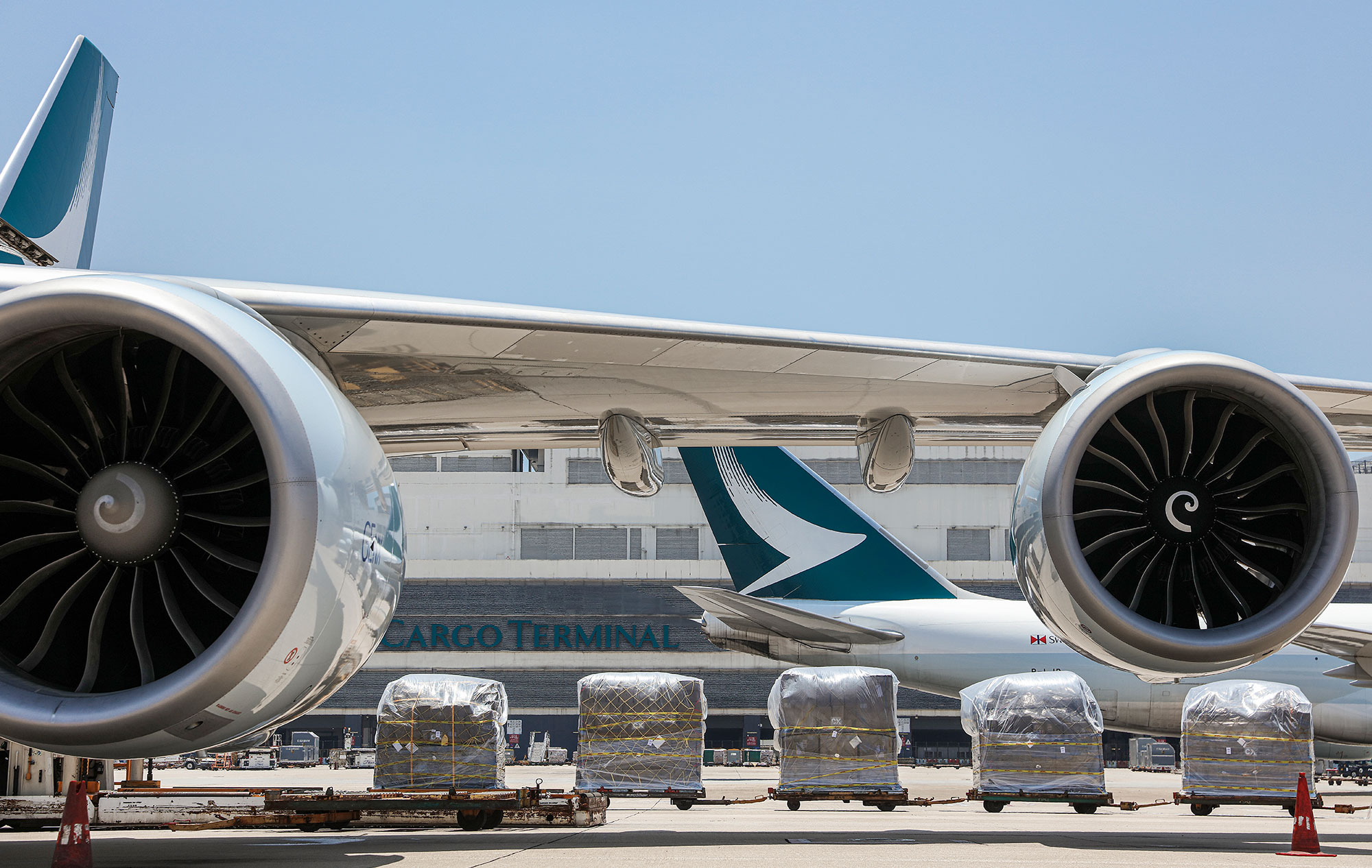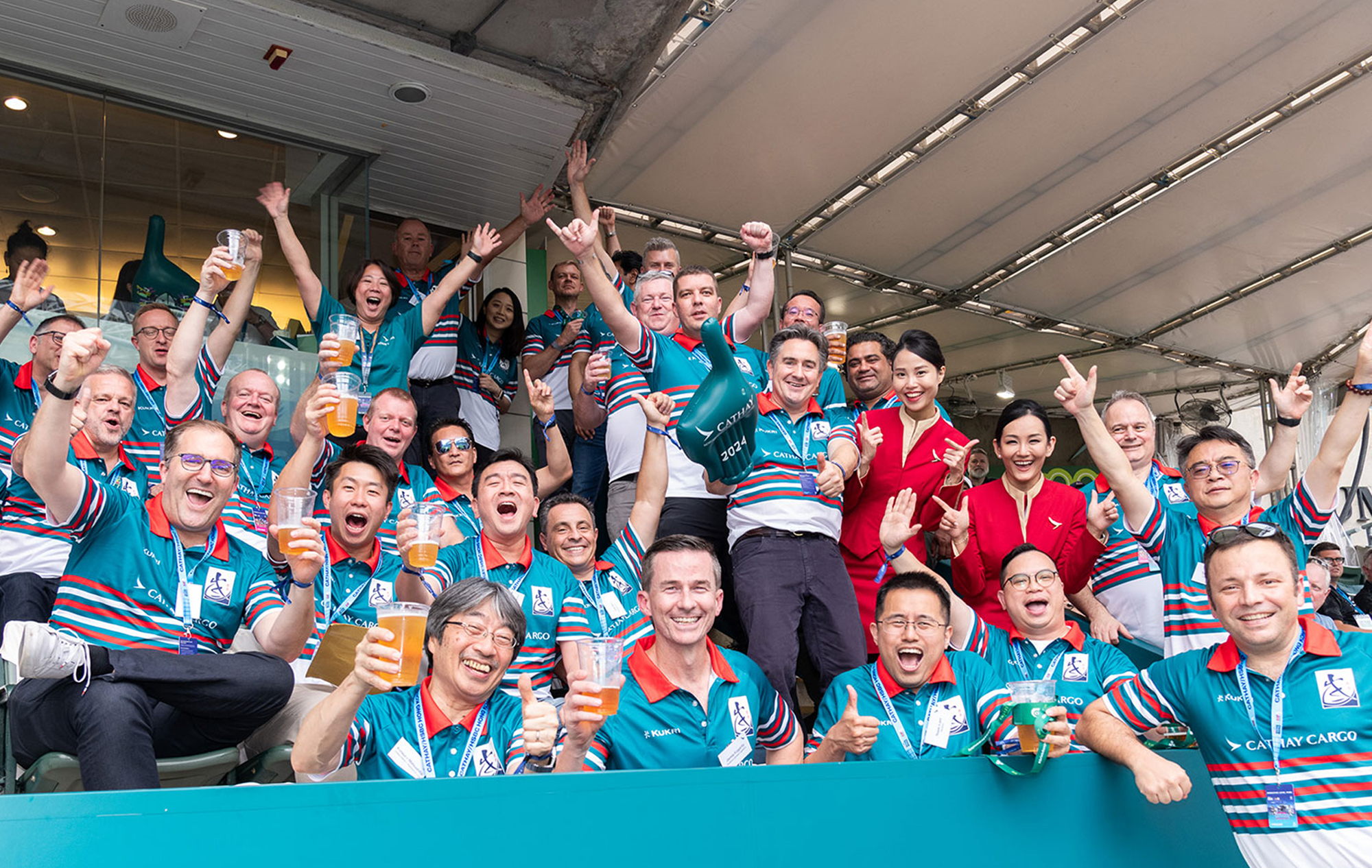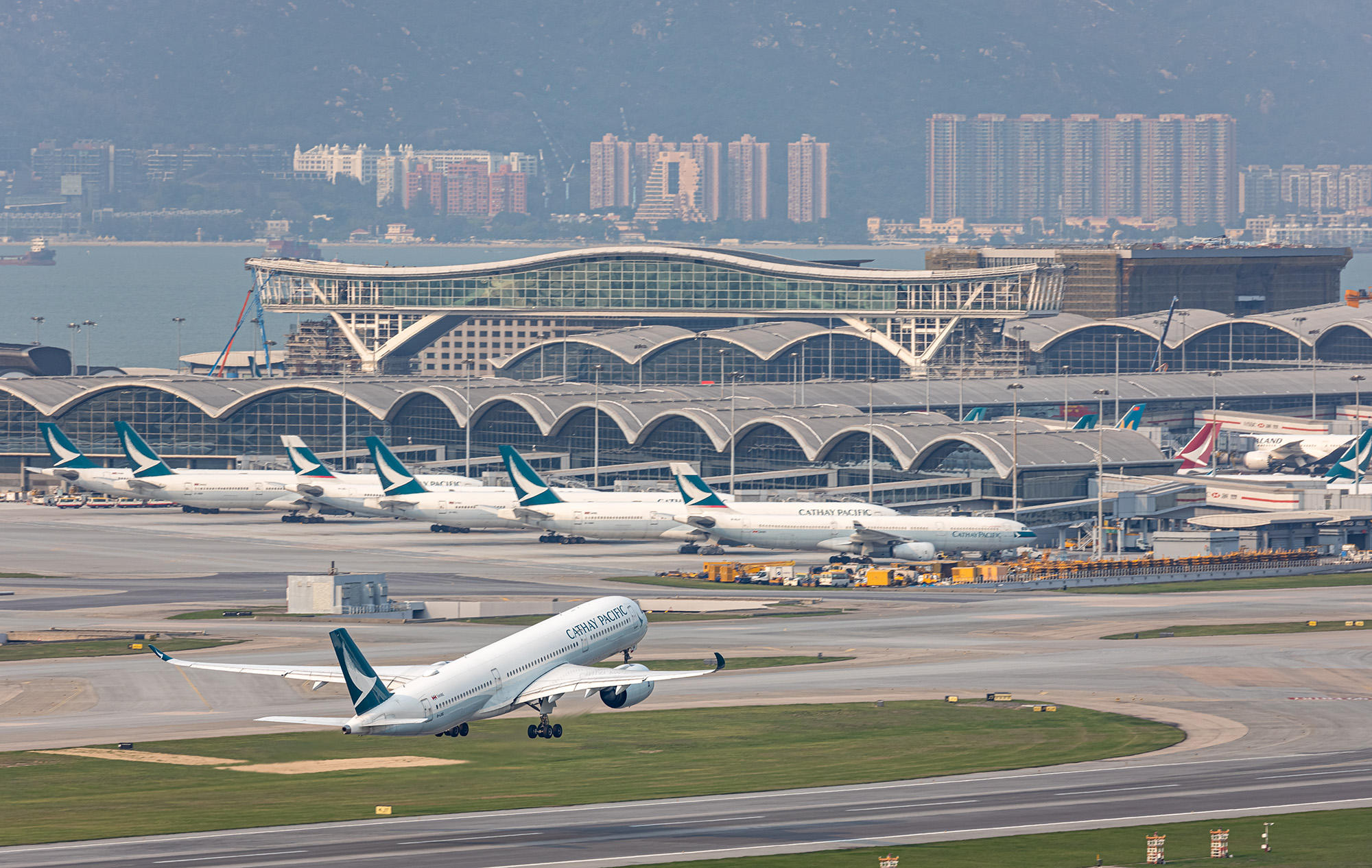You could say the history of the Cathay Pacific Cargo is bookended by humps. The first ‘Hump’ was the route over the eastern Himalayas, flown during the Second World War from India to China to restock the US and China’s war effort against Japan. 70 years on, the hump at this end of the company’s story is the ‘bubble’ atop the airline’s current fleet of Boeing 747 freighters.
It’s hard to imagine now, but the historic predecessor to the Boeing 747-8F (Cathay Pacific has 14 of these) was a post-war DC3 converted from its military C47 guise, stuffed to the gunnels with a payload of woollen clothes, toothbrushes and the dreams of the American Roy Farrell.
The Texan, free from his wartime flying responsibilities, bought and flew his DC3 Dakota – Betsy – to Shanghai from New York (above). He and his subsequent airfreight business co-founder, the Australian Syd de Kantzow, had cut their teeth ‘flying the Hump’. This was a hazardous enterprise in terms of cost to men and machines; 594 planes were lost, 1,659 staff killed or missing. Notwithstanding, this was still the greatest airlift on record until exceeded in 1949 by the tonnage moved in the Berlin Airlift.
In his book Over the Hump Brigadier General William Tunner, who was in charge of both operations, recalled: ‘After the Hump, those of us who had developed an expertise in air transportation knew that we could fly anything anywhere anytime.’
That was very much the inspiration behind Farrell’s move from pilot to would-be airline magnate. By the end of the war, he had ‘flown the Hump’ more than 520 times. This and his recognition of the enormous potential for trade in post-war China, especially Shanghai, led him to take the plunge. Having secured Betsy – now on permanent display in Hong Kong’s Science Museum – he was able to secure the necessary paperwork to fly goods from Sydney on a long, multi-stop route to Shanghai. As the fleet of DC3s grew, Farrell became more of the business brain, and skilled flyer de Kantzow took on the operational role of crewing the fledgling fleet and keeping it in the air.
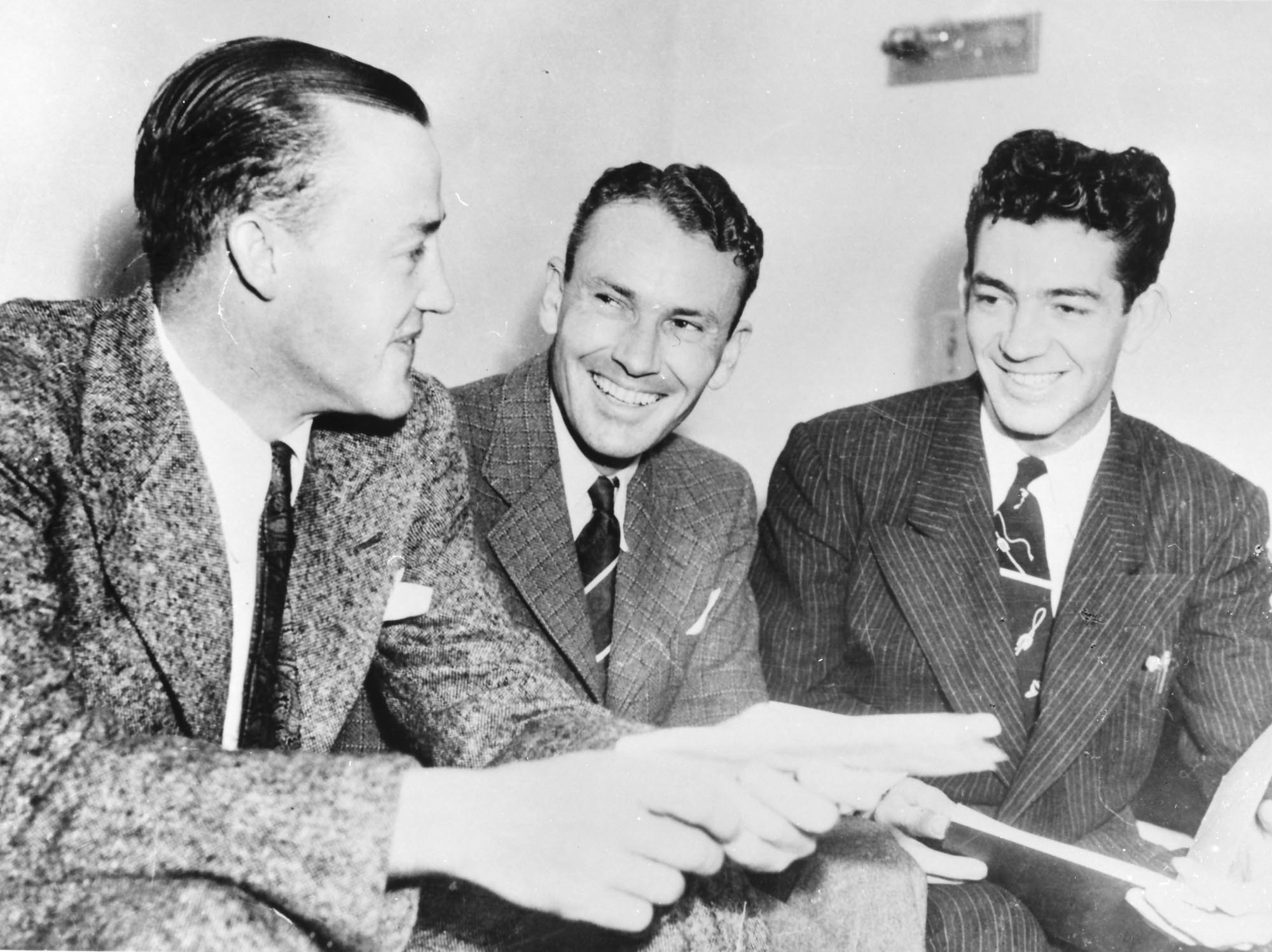
Pilots were drawn from those earning a crust in aviation after picking up and honing their flying skills in the war. Neville Hemsworth was one such. Before starting at the Roy Farrell Export-Import Company he had been flying hastily converted Liberator bombers for Qantas, carrying eight passengers between Australia and Ceylon. He had thought that challenging enough, but it was 33 hours between Sydney and Shanghai. ‘Well, we were young then. We had no regulations about sleep. We dozed in the cockpit and just kept going hour after hour, just three of us and a mountain of cargo sitting behind us,’ he recalled in Beyond Lion Rock, Gavin Young’s ode to Cathay Pacific.
Cockpits were cramped and the climate controlled only by the weather outside the rattling airframe. These were the days before radar and with rudimentary meteorological technology, the weather could loom up from anywhere. With navigation based on the visual, it wasn’t always possible to go all the way around the storms and typhoons – if you diverted too far ‘you could end up not knowing where you were’.
On board, turbulence made the payload a peril with pilots fearful of being crushed by cargo. Hemsworth says: ‘We could either put the gear down so that by going slower we’d rise and float with the weather. Going fast, we’d cut and bump right through it.’
Of course, now modern aircraft can soar quickly many miles above all but the worst weather, and at hundreds of miles an hour past it, limiting turbulent encounters to little more than moderate ‘chop’.
But back then, when things were really bad, but only really bad, it would become necessary to jettison the cargo in flight.

Chic Eather, who retired as a Cathay Pacific captain in 1975, recalls in his book Syd’s Pirates that he was sent to the back of the aircraft on one occasion to hurl cargo out of the door after an engine failed and the aircraft was losing height, pushing past a white-faced but otherwise imperturbable Roy Farrell.
Eather recalls: ‘With his background this emergency would not have frightened him – but jettisoning his cargo of woollen goods…’
The 180lb bales of woollen goods that peppered the islands of Eastern Indonesia from 9,000 feet were followed rapidly by the aircraft’s life rafts, stretchers and tools. Plane saved, valuable cargo lost.
By 1946, the ‘first international air merchandising company in the world’ had a sales office in Hong Kong and advertising its catalogue of Australian goods for sale – as well as its first service to London.
Shortly thereafter, the nascent company’s entry into the perishables market – now an area of significant Cathay Pacific expertise – was confirmed. The South China Morning Post that year featured an advertisement promising Sydney Rock Oysters ‘in 32 hours’ – ‘These very fine oysters, well known in Hong Kong as a great delicacy, have been brought alive in the shell from the Sydney Oyster Beds in the same time they reach the Sydney householder.’
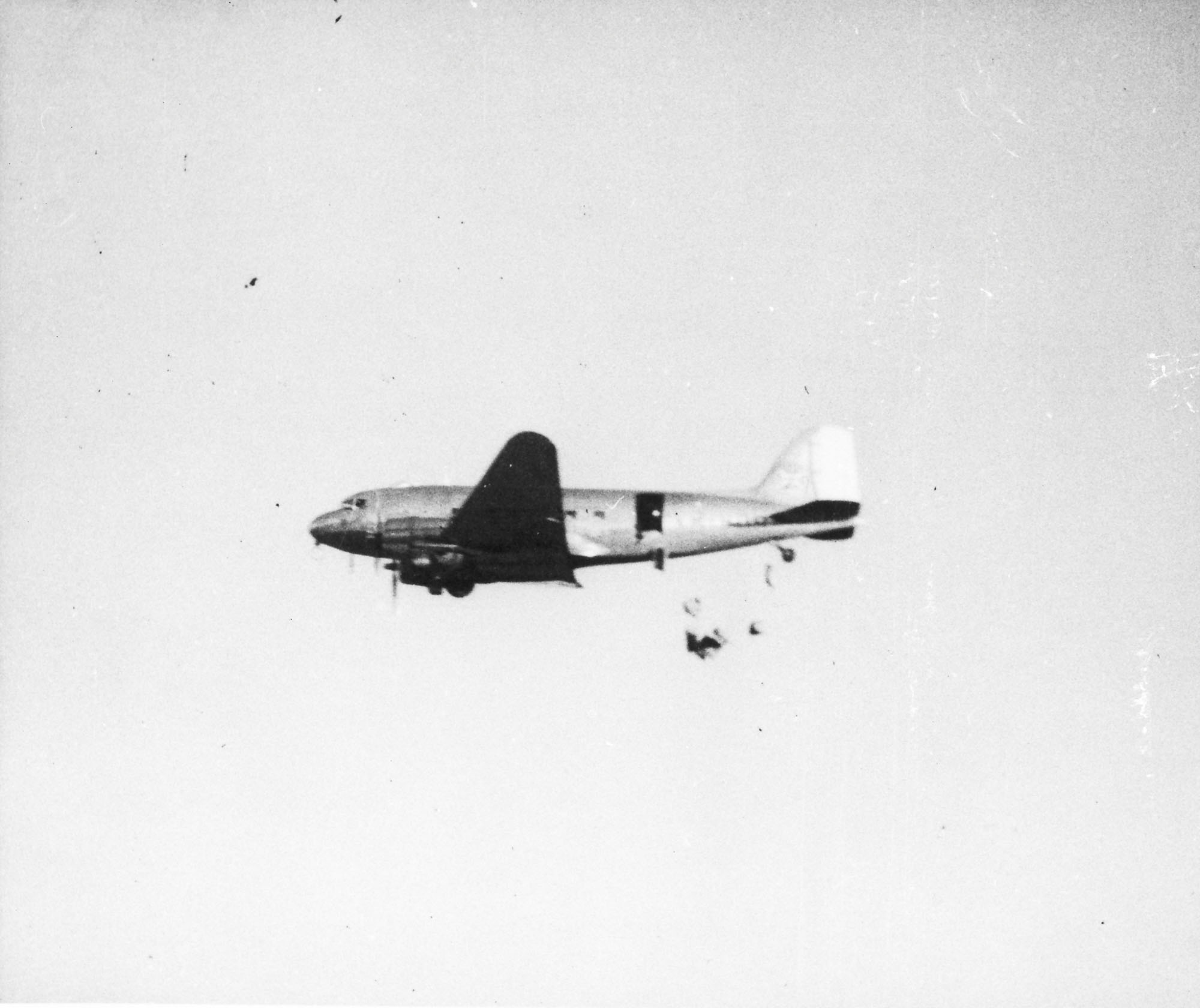
Cathay Pacific Milestones
1946 – Roy Farrell flies his DC3 from New York to Shanghai
1947 – CPA buys Catalina sea-planes for lucrative gold market to Macau – which has no runway
1948 – Swire buys 45% stake in Cathay Pacific Airways
1959 – Cathay Pacific buys the first aircraft purchased new from a manufacturer – the Electra
1961 – Cathay Pacific buys its first jet aircraft, the Convair 880
1962 – Cargo accounts for 8% of revenues, a leap of 150% over the past five years
1964 – Cathay Pacific unveils cargo booking system, enabling ‘freight space to be booked the way a passenger books his seat’
1975 – First wide-body to join the fleet, the Lockheed L-1011 Tristar
1976 – A converted B707 passenger aircraft becomes the airline’s first dedicated freighter and the Kai Tak HACTL freight terminal opens
1982 – Cathay Pacific buys first Boeing 747 freighter from British Airways, reregistered as VR-HVY
1994 – First Boeing 747-400 freighter delivered
1996 – Cathay Pacific Cargo website launches
2005 – Cathay Pacific Cargo sets world first with B747-400BCF (Boeing converted freighter); Cathay Pacific Cargo carries 1m tonnes of cargo in a year for first time
2011 – First of 14 B747-8F freighters joins the fleet
2013 – Cathay Pacific Cargo Terminal opens
The burgeoning sales from the office in Hong Kong were starting to make it apparent to both founders that the desirable course of action for the business was to become a Hong Kong operation. The city was a ruin following Japanese occupation, its harbours littered with sunken ships, some deliberately scuttled ahead of the occupiers’ arrival. But a post-war British colonial military administration was doing its best to re-establish a telephone network – and effective links with the outside world.
Roy Farrell, though, could see a future among the ruins, and there was huge demand for air services to replenish the thousands of refugees in China. But Kai Tak was barely functional as an airport.
On arrival, Chic Eather was dismayed by what he found, likening the airport then to ‘a swamp’ with a tented village surrounded by unforgiving rocky escarpments. In Beyond Lion Rock, Eather recalls being marched to the centre of the airfield by Syd de Kantzow for an important briefing. ‘Never,’ he was told, ‘never let yourself be party to a take-off on Runway 31.’ The runway back then arrowed straight at the 1,500 foot Lion Rock, and an RAF DC3 had recently failed to clear it with the loss of 19 lives. Runway 31 was for landings only.
Wild it might have been, but work was there. But that meant reregistering Betsy as a British rather than an American aircraft, and to satisfy the aviation administrators, the airline had to be two thirds British-owned, especially if it was to look to passengers as an extension to revenues. Thus it was that under the directorship of de Kantzow and the Hong Kong sales office’s Neil Buchanan, as well as Farrell, that the newly incorporated Cathay Pacific Airways got its permissions to fly from Hong Kong to the world.
Unfortunately Betsy, due to an administrative error, was reregistered VR-HDB (victor romeo being the code for Hong Kong), while her younger sister Niki accidentally claimed VR-HDA in the register. Betsy flew back from Australia in her new livery and registration with a consignment of day-old chicks and into aviation history.
There would be problems and setbacks along the way, but this decision to make a home base in the still war-blighted city of Hong Kong chimed with another organisation rebuilding its own shipping and sugar empire – and itself celebrating its 200th anniversary this year. That company was Swire, and its involvement – and, importantly, its investment – would take Cathay Pacific Airways from these humble beginnings to the global airline we know today. But that’s another story.





